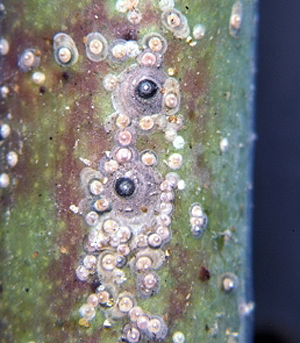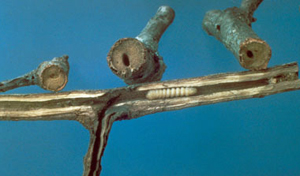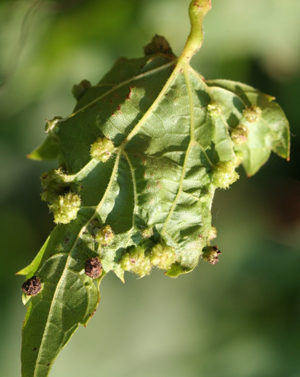Leaf Feeders

Lee Townsend, University of Kentucky

Alton N. Sparks, Jr., University of Georgia, Bugwood.org
Sap Feeders

John A. Weidhass, Virginia Polytechnic Institute and State University, Bugwood.org
Some plants are very sensitive to feeding by certain aphid species. Saliva injected into plants by these aphids may cause leaves to pucker or to become severely distorted, even if only a few aphids are present.Also, aphid feeding on flower buds and fruit can cause malformed flowers or fruit.
Aphids produce large amounts of a sugary liquid waste called "honeydew". The honeydew that drops from these insects can spot the windows and finish of cars parked under infested trees. A fungus called sooty mold can grow on honeydew deposits that accumulate on leaves and branches, turning them black. The appearance of sooty mold on plants may be the first time that an aphid infestation is noticed. The drops can attract other insects such as ants, flies, and wasps that will feed on the sticky deposits. For more information, see Entfact 103.

United States National Collection of Scale Insects Photographs,
USDA Agricultural Research Service, Bugwood.org
Borers

James Solomon, USDA Forest Service, Bugwood.org
Galls

Whitney Cranshaw, Colorado State University, Bugwood.org